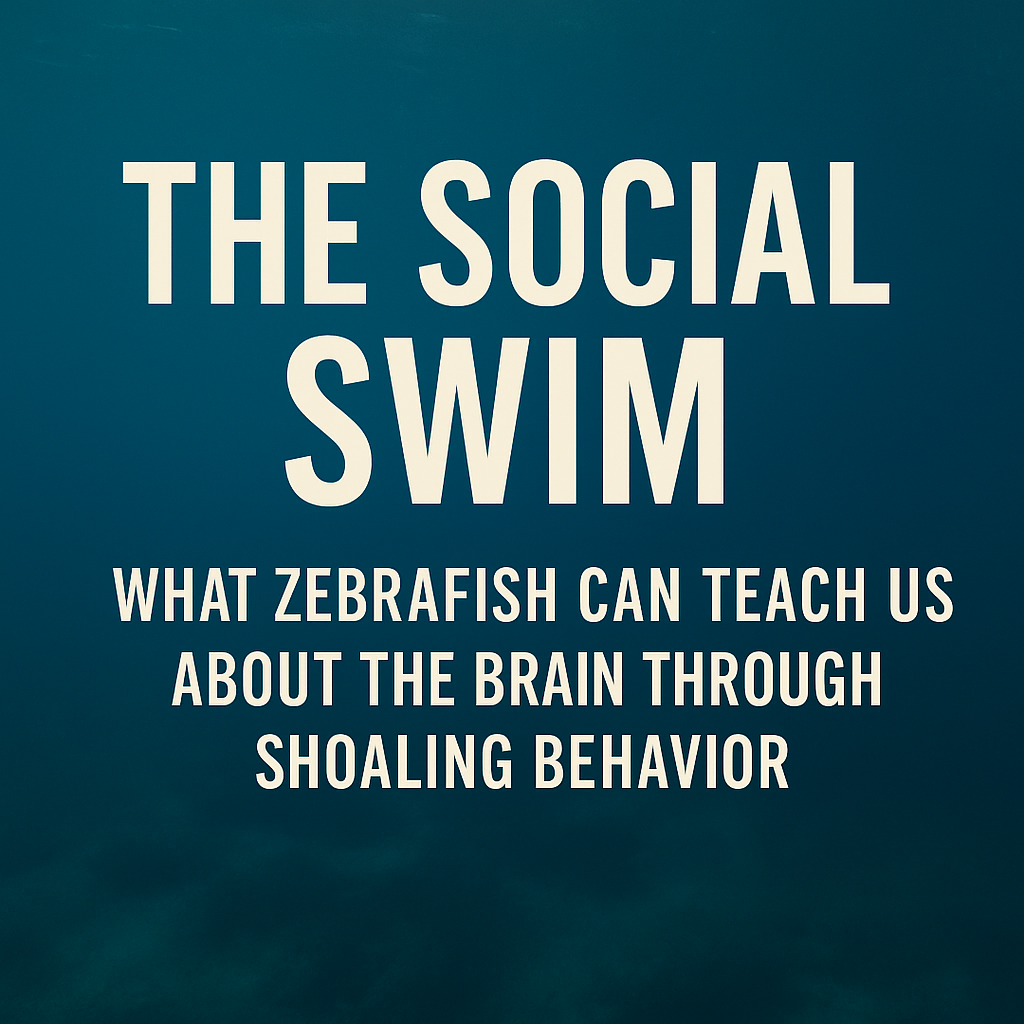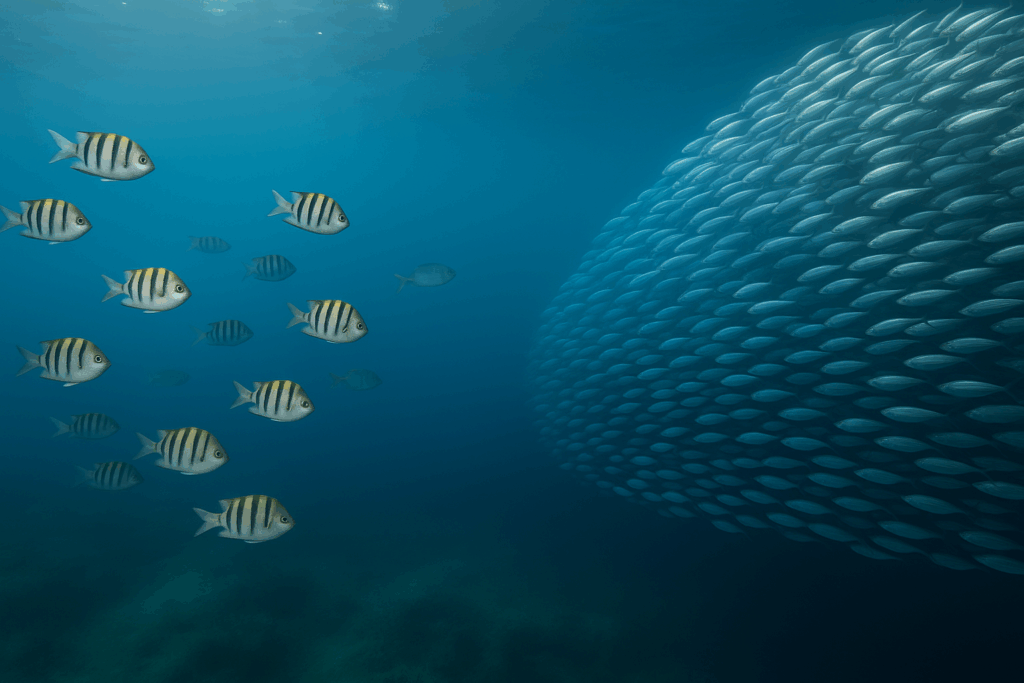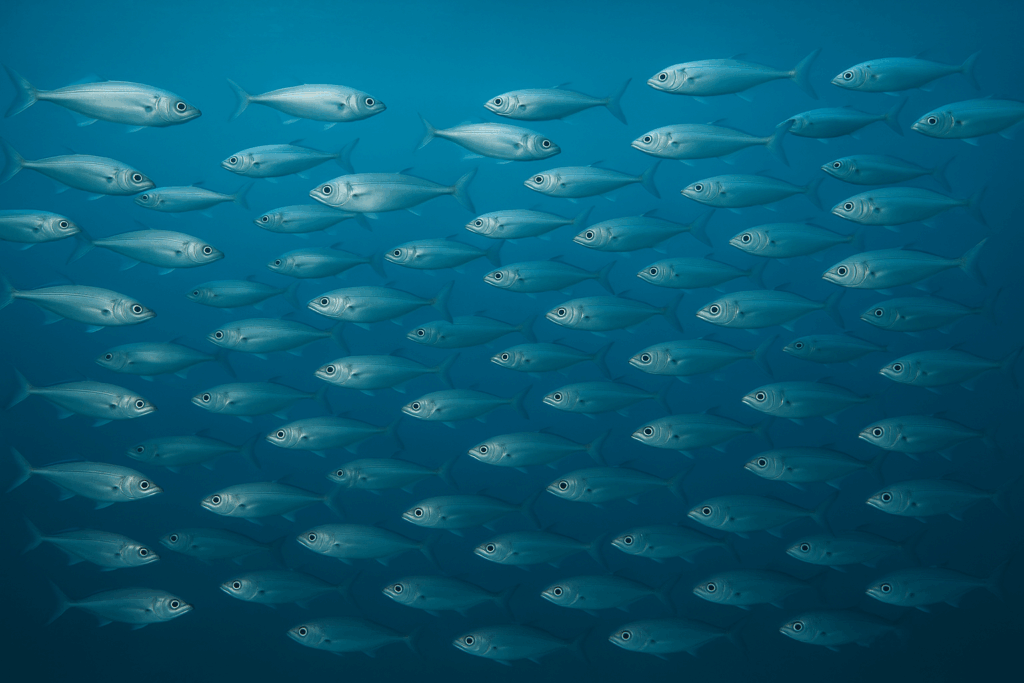

In the calm ripples of a zebrafish tank, something remarkable happens: a cluster of fish align loosely, shifting and adjusting in response to each other’s presence. They’re not communicating in words—but they are communicating. Shoaling, or the innate tendency of fish to group together, is one of the most accessible and reliable behavioral readouts in modern neuroscience.
Zebrafish (Danio rerio), long prized for their genetic tractability, have become a mainstay in behavioral neuroscience, neuropharmacology, and translational psychiatry. Shoaling behavior offers a unique, non-invasive window into their social cognition, emotional state, and even neurological health—with powerful parallels to human conditions such as anxiety, autism, and depression.

Let’s clarify a common misconception: shoaling is not schooling.
Shoaling behavior emerges naturally in zebrafish by 2–3 weeks post-fertilization and strengthens through development. It reflects both inborn social drive and ongoing emotional evaluation—making it an ideal metric for examining how zebrafish perceive their environment and one another.
Shoaling is orchestrated by a delicate interplay of neurotransmitters and brain regions. Among the key players:
Understanding these systems allows researchers to pharmacologically manipulate shoaling to model human psychiatric conditions.

Behavioral assays have evolved from crude observational methods to precision video-tracking systems using zone-based analytics.
This classic test involves placing 5–10 zebrafish in a tank and recording behavior over time:
A single test fish chooses between:
Metrics include:
These tests are non-invasive, reproducible, and highly scalable—especially when combined with automated tracking software like ConductVision.
Behavioral deviations in shoaling offer a sensitive proxy for neurological and psychiatric states:
Zebrafish with mutations in genes like shank3b, nlgn3, or cntnap2 display:
These behaviors mirror core features of ASD, making zebrafish a reliable translational model (Liu et al., 2018).
Early signs of Alzheimer’s-like pathology in zebrafish include:
Shoaling assays may help identify preclinical neurodegenerative markers, before cognitive or motor impairments manifest.
Shoaling assays are increasingly used in preclinical screening pipelines:
Recent applications include:
Zebrafish offer a faster, ethical, and cost-effective alternative to rodent models, especially in early drug development.

While zebrafish were first used in developmental biology, their leap into behavioral neuroscience came in the early 2000s. Key milestones include:
Today, zebrafish are used by institutions from Harvard to EMBL as a primary screening organism for neurobehavioral research.
Despite their evolutionary divergence from humans by hundreds of millions of years, zebrafish (Danio rerio) remain remarkably relevant to human health research. They share approximately 70% of their genes with humans, and notably, over 80% of genes associated with human diseases have a zebrafish ortholog (Howe et al., 2013). This deep genetic conservation, coupled with zebrafish’s transparency, rapid development, and behavioral richness, has made them a central model in translational neuroscience.
One of the most promising applications of zebrafish behavior lies in shoaling, which serves as a cross-species proxy for social cognition, affective regulation, and environmental sensitivity. Below, we elaborate on the conditions where zebrafish shoaling has particular translational value.
Oxytocin—the so-called “social bonding hormone”—is critical for attachment, trust, and prosocial behaviors in mammals. Zebrafish possess a homolog known as isotocin, which plays a similar neurochemical role. Disruptions in isotocin signaling lead to reduced shoaling, impaired group cohesion, and decreased social preference in zebrafish (Theodoridi et al., 2019). These phenotypes mirror social dysfunction in humans with oxytocin pathway anomalies, including:
Not only can zebrafish models test the role of oxytocin receptor agonists or antagonists, they can also be used to explore how early-life social experiences affect oxytocin system development. This makes them a powerful tool for preclinical studies aimed at rescuing social deficits.
Zebrafish naturally prefer to be with conspecifics. When that preference diminishes—whether due to genetics, pharmacology, or environmental stress—scientists can infer a loss of social cognition.
Mutations in ASD-related genes such as shank3b, cntnap2, and mef2c have been shown to produce measurable disruptions in zebrafish shoaling behavior (Liu et al., 2018). These fish:
These deficits closely parallel core ASD symptoms: reduced eye contact, social withdrawal, and failure to interpret social cues. Because shoaling is easily quantifiable and observable, it offers an objective metric for screening therapeutic compounds or understanding genotype–phenotype relationships.
Zebrafish are exquisitely sensitive to stress during development. Exposure to:
…can produce long-term changes in shoaling behavior. Fish that have experienced early stress often show reduced social drive, increased thigmotaxis, and altered HPI (hypothalamic-pituitary-interrenal) axis function—the fish analog of the mammalian HPA axis.
In human studies, early-life adversity is a known risk factor for:
By modeling these stressors in zebrafish and tracking shoaling outcomes, researchers can identify critical windows of vulnerability, test neuroprotective interventions, and study how early experiences shape the social brain.

From advanced Animal Lab setups to high-performance Lab Hardware, ConductVision provides everything your lab needs to streamline research and accelerate discovery.
Explore our full suite of services:
Effective shoaling depends on the ability to perceive and process:
This makes it an excellent system for studying sensory integration deficits, which are common in:
Fish with impairments in visual or neural circuitry relevant to motion perception often fail to shoal appropriately. Such deficits are readily measurable through high-resolution video tracking and movement analysis tools. By testing interventions—from drugs to gene therapies—scientists can explore ways to enhance sensory-motor integration and improve social interaction in affected models.
The key to shoaling’s translational power lies in one undeniable truth: social behavior is fundamental across species.
Across taxa, the drive to connect is biologically ingrained, and when that drive is altered—whether by genetics, stress, or neurodevelopmental disruption—it becomes observable. Shoaling gives researchers a rare opportunity to measure that disruption early, ethically, and reproducibly.
When zebrafish gather—or choose not to—they’re showing us something deeply human. Their behavior reflects mood, memory, cognition, and context. Through the lens of shoaling, we glimpse the biological scaffolding of social life.
In a world that increasingly values precision and reproducibility, zebrafish shoaling remains a uniquely powerful, accessible, and illuminating metric. And for those of us in the field—it’s also a reminder that even the simplest behaviors can tell the most profound stories.
📩 Interested in our shoaling behavior solutions?
Visit https://conductscience.com
Wong, K., et al. (2013). Analyzing habituation responses to novelty in zebrafish. Behavioural Brain Research, 208(2), 450–457.
